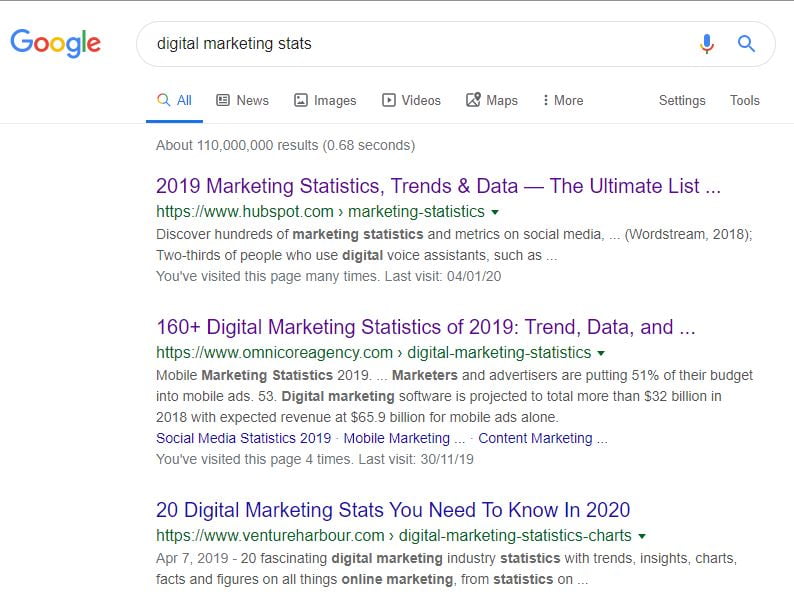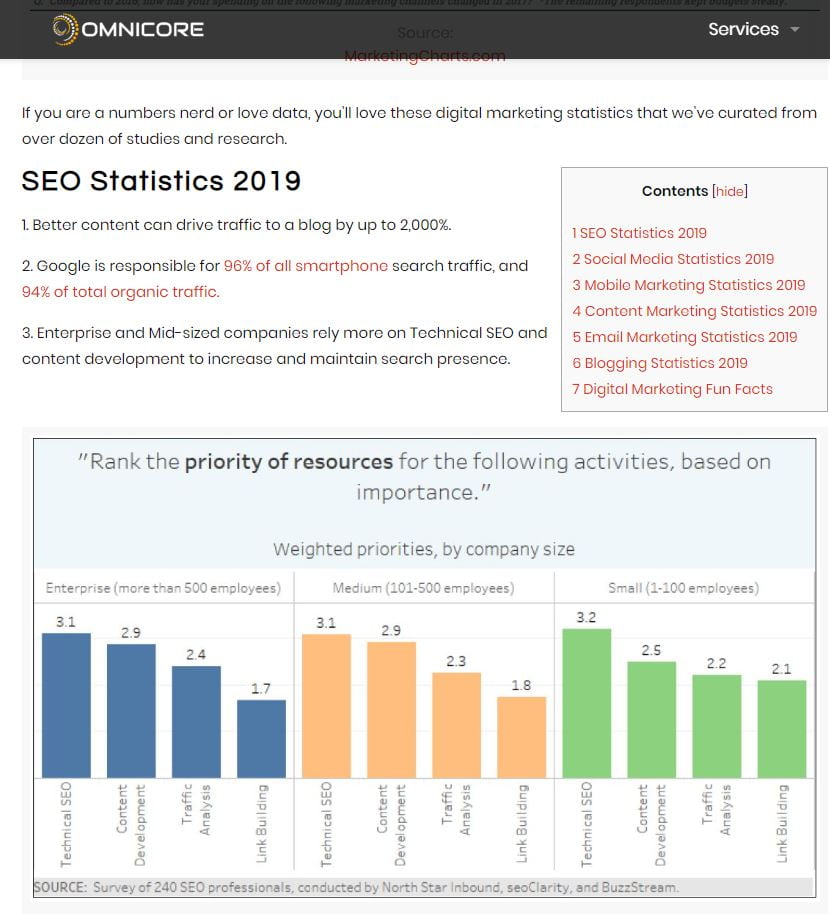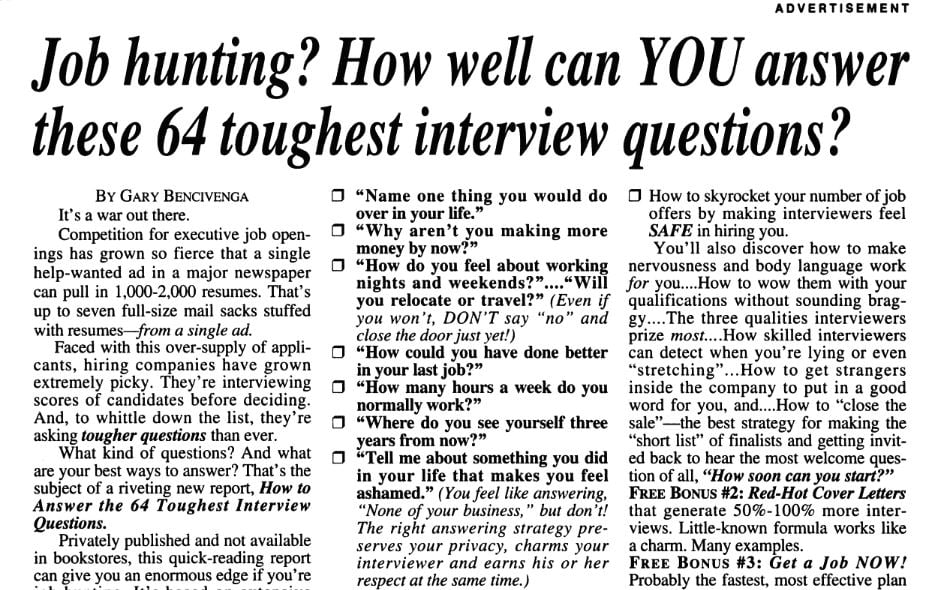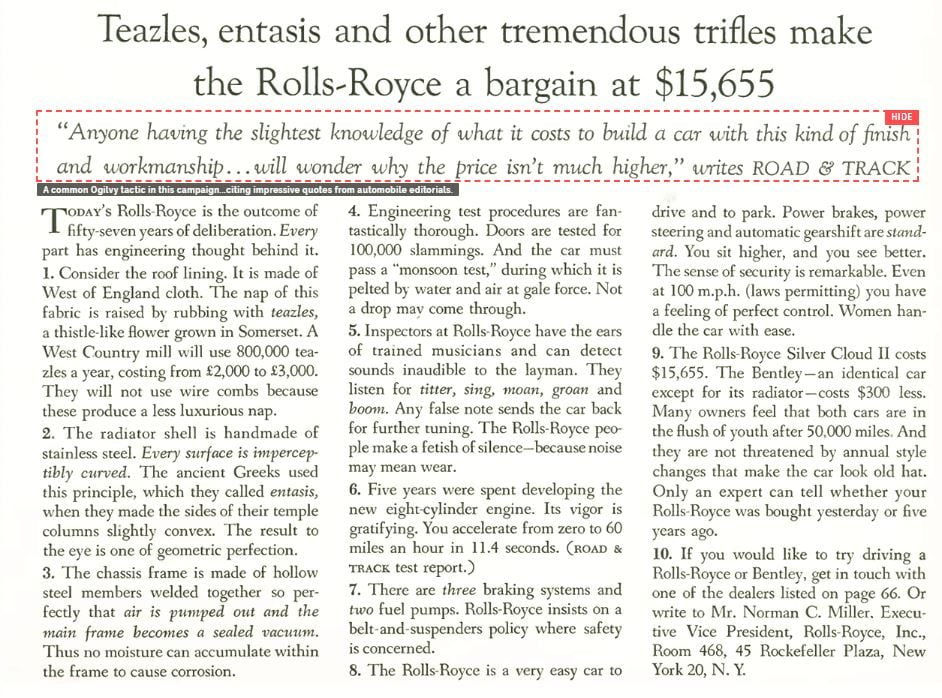What’s the most important part of copy?
Is it the headline?
Is it the call to action?
How about the body? Yeah, yeah. It’s gotta be that, right?
Nope!
It’s actually the hook or introduction.
This is because the hook to a piece of copy is your foot in the door.
If it’s exciting and interesting, people will be eager to continue reading.
Otherwise, they’ll click over to another web page.
That’s why I’ve put together a list of the eight best copywriting hook strategies for you today.
Take a look.
What is a hook, anyway?
A hook isn’t just an introduction.
It’s a way to separate yourself, stir up interest, and set the tone for the rest of the content.
Good writers spend a lot of time on the hook, and you should, too.
Seeing as the average attention span is declining (I’m looking at you, Instagram), great hooks are more important than ever.
As a matter of fact, the average attention span decreased 3.75 seconds from 2000 to 2015.

I’m almost certain that’s worse than a goldfish! 🐠
Intros are a common sticking point for writers, however.
Many have no issues fleshing out a large body of text and editing it.
The problem is always with the headline and hook.
Sound familiar? Don’t fret. I’m going to cover how to write a good hook next.
Copywriting hooks
Below are effective hook writing techniques, along with real-world examples for inspiration.
Warning: they’re extremely effective. Write amazing copy at your own risk.
1. Speak directly to the reader
The best copy speaks to the reader.
This raises their interest and spikes attention because the message feels personalized.
On the flip side, a lot of writers make the mistake of being too me-centric. You know, copy that’s all about them and not about the audience.
No fun!
Whether you’re writing a blog post or a sales letter, it needs to sound like it’s made for the reader.
You can achieve this by replacing words like “us” and “we” with “me” and “my,” for example.
Similarly, include “you” where possible. This shifts it to a conversation between two friends.
80% of marketers agree that personalized content is more effective, as well.

This is because nobody wants to feel like a cog in the wheel or a number in a database.
Personalizing content with this small touch brings the human element back to business.
It’s so easy to focus on performance, KPIs, and forget that you’re speaking to real people.
Look at this introduction from one of Convince & Convert’s blog posts:

It’s written in the first person and addresses the audience head-on.
This simple change in how you write has the potential to drastically increase content performance. Try it yourself!
If you need help writing sales copy, give Jasper a shot. I use it every day, and it’s game-changing.
2. Mention an interesting or shocking statistic
Data speaks mountains.
I personally love using this technique in my personal and client projects.
It’s one of the best methods to interest readers and backs up the points you make.
Look at this blog post I ghostwrote for Neil Patel a while back:

I used an interesting stat about how many social media users are in the world and how that compares to the Earth’s population.
The data you cite needs to relate directly to the content or copy, too.
I like doing a simple Google search whenever I’m in need of a piece of data for:
- Keyword + stat
- Keyword + stats
- Keyword + statistics
Here’s an example:

I would then visit a website that’s compiled a list like this one:

Make sure you properly source information like this, too.
Link to the original source and not the website referencing it.
3. Ask a question relevant to the audience
Engaging readers is crucial with good content and copy.
Otherwise, they won’t be enticed to read the entire message.
That’s why leading with a thought-provoking question needs to be at the top of your copywriting hooks list.
A relevant question signals that people have found the right resource which helps them absorb the content better.
Ask the audience a question about:
- The problem they’re experiencing.
- Symptoms of the problem they have.
- The solution they want.
- Values or beliefs they hold.
Check out this epic ad by Gary Bencivenga:

It’s an advertisement for a report on the 64 toughest interview questions and how to answer them to land jobs.
The title “Job Hunting? How well can YOU answer these 64 toughest interview questions?” uses two questions strategically.
The first addresses the ideal audience; someone looking for a job.
The second tests their skill at interviewing and creates a sense of mystery. Is the ad going to show me the questions? Is it going to tell me how to answer them?
A.K.A, the perfect concoction of questions to get readers watering at the mouth for more.
4. Tell a personal story
Stories, as I just touched on in a previous article, are a fascinating technology.
We’ve used them to communicate since we were cavemen painting wall art and hunting with spears.
Stories still play a massive role in marketing despite us being so advanced.
They generate emotion, activate important parts of the brain, and establish a connection with others.
And, what’s one of the best stories to tell? Your own.
Telling a personal story as the hook is capable of activating the frontal lobe—the part of the brain responsible for emotion, personality, and more.

But, that’s just the tip of the iceberg.
Stories are also capable of:
- Helping readers see themselves in the story.
- Giving the audience hope.
- Creating an emotional investment in your brand.
Think of a story that relates to what you’re writing about. Was there inspiration for your brand or product? How did you get the idea for the topic?
Heck, it can be as simple as an inside joke or a random memory.
This is because stories also create vulnerability.
You’re showing a personal side that many don’t in business. The good news is it will make you stand out for the better.
This is one of many strategies I teach in my Marketing Academy if you’re interested in learning more.
5. Make an analogy or use a metaphor
A little creativity goes a long way in writing.
Whether you’re writing a blog post or landing page, a little spice never hurts anything.
In fact, it can help.
One way to do so is with an analogy or metaphor.
I’m sure you’ve heard the analogy, “Life is a marathon, not a sprint.”
A metaphor, on the other hand, is like “The calm lake reflected like a mirror.”
Both of these two writing techniques are interesting and paint a picture in the reader’s mind.
They can take any boring piece of material and give it extra zest.
You can learn more about this kind of best practices in my video here:
6. Go against the grain
Be different. Say something nobody would expect.
It’s a surefire way to raise eyebrows and get the audience wondering why you think the way you do.
This is also known as being a contrarian.
However, let me tell you something: you better be able to back it up!
Going against the grain with a different viewpoint will require data or case studies to solidify your idea.
Imagine that you said dogs are better than cats(Don’t worry, I agree!)
You would need to be equipped with several concrete reasons why this is the case.
7. Newsjacking
This requires the timing of a fox, but it can pay dividends if you pull it off.
Newsjacking is a term coined when marketers use the latest news to gain traction for their own material.
You’re literally stealing, or jacking, the news.
It needs to be relevant to your industry, though.
For instance, I wouldn’t newsjack something about home design when speaking to digital marketers.
There’d be a lot of cricket noises.
The benefit of newsjacking is you ride the news like a wave, surfing on its back—this generates your business extra traffic and attention since it’s a hot topic.
It may also be on the reader’s mind or, at minimum, related to their life.
You can begin by looking up industry news by searching for things like:
- Industry + news
- Industry + breaking news
- Industry + breakthrough
Take this interesting news article as an example:

This would make the perfect addition to a hook if I was writing about marketing and personalization.
8. Paint a picture in the reader’s mind
Imagination is seriously underrated when writing a good hook.
It places readers into an emotional state and helps them see themselves in the situation you create.
This then can make them want to experience that situation for real or avoid it.
You can do this by using words like:
- Imagine
- Picture
- Envision
- Consider
Follow these up with an imaginary scenario about the topic you’re writing about.
Additionally, take advantage of meticulous detail like Rolls Royce did in this ad:

Note how the second paragraph reads, “Consider the roof lining. It is made of West of England cloth. The nap of this fabric is raised by rubbing with teazles, a thistle-like flower grown in Somerset.”
It instantly makes you picture the luxurious interior and craftsmanship that went into making it.
The rest of the copy takes this exact same approach, explaining so much detail you can’t help but picture it in your head.
Wrapping up copywriting hooks
The hook is one of the most important elements of good writing.
It hooks readers in like a fish and keeps their eyes glued to the page until they’re finished.
A poor hook will result in the audience yawning and looking for something else to read.
You can learn more about copywriting and get mentorship in my online training if you’re serious about taking your writing skills to the next level.
Here’s a summary of the copywriting hooks I covered today, as well:
- Use a personal tone to speak directly to the reader and address them.
- Cite an interesting or shocking statistic to keep readers drooling for more.
- Ask a question the audience will say yes to or one which relates to their position.
- Tell a personal story to add a hint of vulnerability and personality to your writing.
- Think of analogies and metaphors like salt and pepper; they add spice to bland material.
- Be a contrarian and say something that goes against the norm of your industry.
- Take advantage of recent news stories and ride them like a wave.
- Use so much detail readers can’t help but use their imagination.














